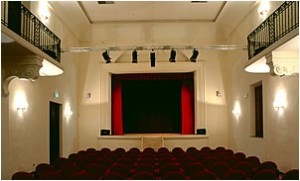
Description
The Antella Municipal Theatre has had a long and checkered history, a reflection of the political and non-political facts that have characterized Italy from the nineteenth century to today.
The theater was founded towards the end of the 1800s as a small hall, home to the Società di Reciproco Soccorso (Society of Mutual Aid), and thanks to extension work in 1921 it took on its current character and size.
Two parallel lines of development characterize its history. On the one hand, it has been confirmed as a cultural area and meeting place, and would host the activities of young Antellesi companies and groups from further afield. On the other hand, the current Hall was the site of clashes between different political factions.
The Theater became the seat of the House of Fascism in 1921, but it was only in 1945 that the word “popolo” (he people) covered the writing beam (and even today you can make out the writing on the theater’s facade). Since then, the site has fallen into a sort of silence, used as a testing site or a mere warehouse.
It was only in 1974 that it became effective property of the Municipality, but the restorations that reestablished its excellent acoustics, reinvigorating its past beauty, date back to a more recent 1999. The restorations preserved the original Art Nouveau style, with terracotta floors and decorative geometric lines, the glazed window-door atrium with floral motifs carved in wood and the Antella coat of arms, the loggione marked by the U gallery with a beautiful wrought iron railing, and the unique feature of its double stalls, indoor and outdoor, in reference to the same era.
Since 2003, the theater has been entrusted to the <strong><a title=”Archètipo Association website” href=”http://www.archetipoac.it/” target=”_blank”>Archètipo Association</a></strong> and the direction of Riccardo Massai, thanks to which the theater has established itself as a center of artistic and cultural production and promotion of many young talents.
Information about the theater’s history have been extracted from Massimo Casprini, Il teatro dell’Antella – Oltre un secolo di storia, Firenze, Pagnini e Martinelli editori, 2003 (Massimo Casprini, The Antella Theater – Over a Century of History, Florence, Pagnini and Martinelli publishers, 2003).
How to get
[mapsmarker marker=”30″]











